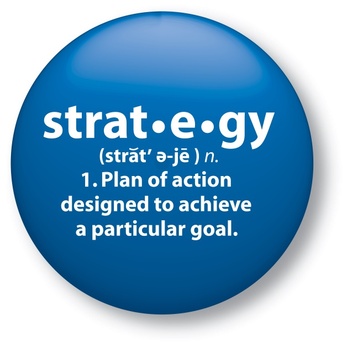
This past June there was an interesting exchange on the Blue Avocado website between its editor, Jan Masaoka and Michael Allison, author of one of the most widely accepted books on nonprofit strategic planning. Like many others recently, Masaoka called into question the value of strategic planning for nonprofit organizations, pointing out numerous flaws that often beset the process. Numerous organizations have wasted considerable time and money developing a comprehensive long-range strategic plan, only to have it lose relevance as internal and external conditions change for the organization, fail from lack of translation into operational plans, or die from lack of attention or resources.
Allison argued in return that strategic planning which reflects thoughtful and accurate understanding of the environment and incorporates ongoing performance measurement, still provides the best framework for organizational growth and advancement.
I argued for a middle ground in my last blog article on this subject, Strategic Planning: What’s the Point? I believe that a strategic planning process which is suited to the culture and character of the organization, leads to clarity of mission and vision, and provides a framework for ongoing strategic decision-making based on continuous performance measurement and environment scanning is the best way for nonprofit leaders and their boards to achieve their preferred future.
However, missing in this debate is the single biggest factor which can either drive success or failure, regardless of the approach to strategic thinking/planning. I’d like to suggest that the factor which is often overlooked in this debate is the extent to which the chief executive officer actually executes the strategic initiatives described in the plan. In other words, regardless of the scope or duration of the plan, regardless of the format, the benchmarks, the style or any of the other variances in how good strategic thinking and planning can occur, it falls on the shoulders of the CEO to make sure that the plan is turned into action and that the strategies are not only implemented, but evaluated and monitored.
It has become common knowledge that CEOs are rarely fired for failing to do planning. In fact, the attribute often admired in CEOs is their ability to see the big picture, to think globally, to cast a large vision, to fly at 30,000 feet, to converse with angels…. well, you get the point. I used to say that my job as a CEO was to stare out the window and think profound thoughts. Of course, that isn’t all CEOs do, but they are expected to be the chief architects of the organization’s vision for the future. And that’s what strategic planning is all about. Notwithstanding the potential pitfalls inherent in the way much traditional strategic planning is conducted, CEOs are expected to present a coherent vision for the future which not only advances the organization’s mission, but does so in a financially sustainable manner.
Allison certainly agrees with this point, as witnessed by the fact that the third edition of his book, Strategic Planning for Nonprofit Organizations (2015) includes the articulation of a business model using the sustainability matrix mapping exercise described by Bell, Masaoka and Zimmerman (2010) and updated by Bell and Zimmerman in 2015. And although he includes a very short final chapter on how to use the plan, including a few words on how to monitor changing trends, he basically ignores what I believe is the most important factor in successfully implementing the goals and objectives that together describe the organization’s preferred future.
So, how can CEOs make sure that their organization’s strategic plan is and remains a living and dynamic document which moves the organization forward? Micro-managing the process is not the answer. Implementing any of a number of common sense systems, however, can ensure constant attention to the plan and actually provide greater nimbleness to respond to changing conditions. Let me offer up a few ideas.
- The first way to ensure the CEO’s attention to executing the strategic plan is to couple his or her annual compensation to fulfillment of the its goals and objectives. Some organization’s establish a base salary and then identify which portion of that base is dependent on achieving the plan’s goals. Other organizations set aside a certain amount of bonus money that can be awarded if goals are achieved. Regardless of the method, it only makes sense that the CEO’s annual performance review should be tied to the extent to which he/she tangibly moved the organization toward the preferred future, as defined by the strategic plan.
- Lest you think that I am contradicting myself from my previous calls for dynamic strategic decision-making as opposed to traditional strategic planning, let me clarify. Boards adopt strategic plans and have every right to expect their CEOs to execute those plans. But Boards also approve changes to the plan as appropriate, support decision-making that comes as a result of changing conditions, and should reward leadership which reflects responsiveness to changing trends or conditions. A merit-based compensation plan which takes into consideration the fluid nature of strategizing may be more complex, but should be considered as part of the board’s expectations for its CEO.
- Board engagement in supporting the plan can be achieved by structuring regular board meetings around the major themes of the strategic plan. Envision a board meeting in which the majority of time is spent evaluating the progress of the organization toward achieving its goals. Gone are boring operations reports. Financial reports are related to the plan, complete with scenarios and forecasts. I used this approach to good effect, not to keep the board unware of other operational matters (we published a board briefing book between board meetings which shared such information), but to help them fulfill their primary strategic, legal and fiduciary responsibilities. Boards can help their CEOs remain focused on strategy by explicitly demanding more board meeting time on strategic trends and issues.
- Explicit decision-making processes should be developed and utilized. There are many models to choose from. I happen to like David LaPiana’s model of strategy and execution, but there are others. His approach can be used as an execution tool to actually drive forward the goals articulated in the strategic plan, while allowing for shifts in thinking that naturally come about in dynamic and changing environments. The CEO has to model this kind of continuous strategic decision-making and expect it of all other executives in his organization. The filters or lenses for making value judgments about strategic issues that arise can flow directly from the environment scan, business model analysis, and capacity assessment that should be part of the strategic planning process.
- Let me interject a word here about consultants. It should be an expected part of every consultant contract for strategic planning facilitation to include the development and implementation of decision-making processes that support execution, implementation, learning, and adaptation. It may be necessary to utilize additional periodic consulting to advise the board and the CEO on how well its plans are being executed and to offer additional coaching and guidance. No organization should be satisfied with a “one and done” approach from a consultant. The ideal deliverable is an embedded process of strategic thinking, planning and decision-making that extends way beyond the publication of a slick planning document.
- Let the entire organization know where it is headed. Through newsletters, video messages to employees and stakeholders, posters and other media, the CEO is not just the visionary who sees the future, he/she must also be the story-teller-in-chief. Dreams are shared through story. The strategic plan is a dream, albeit one that may change over time, as do all dreams. But the dream will stay locked in the corner office if the story isn’t told.
Do you have any suggestions on how the CEO can ensure execution of the strategic plan’s goals and objectives? I’d love to hear your comments and ideas.





